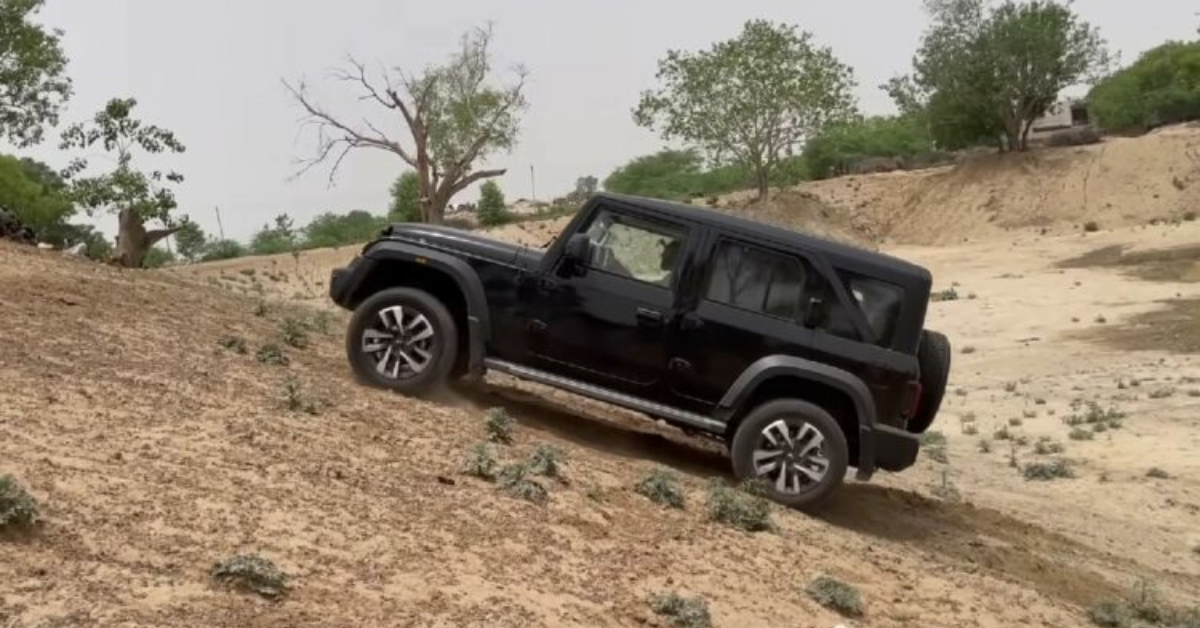The Mahindra Thar Roxx has quickly become a favorite among adventure enthusiasts and off-road lovers across India. With rugged looks, powerful performance, and a true 4×4 system, it’s designed to take on the most challenging terrains. But as one recent case involving a Thar Roxx driver has shown, misusing or misunderstanding your 4WD system can lead to serious mechanical damage and expensive repairs.
In this blog, we’ll explore what went wrong, the common mistakes that damage 4WD systems, and how to ensure your Mahindra Thar (or any 4WD vehicle) remains in top shape for years to come.
🚘 What Happened? The Incident That Sparked the Conversation
A Mahindra Thar Roxx driver recently shared his experience on social media after facing major 4WD issues during an off-roading session. What was supposed to be a day of thrill and fun turned into a cautionary tale, as the driver unknowingly made critical errors in using the 4WD system, resulting in drivetrain damage.
His experience has now become a learning moment for thousands of SUV owners across the country, especially those new to 4×4 vehicles.
🔧 Understanding the 4WD System in Mahindra Thar Roxx
Before diving into the mistakes, let’s briefly understand the Thar Roxx’s drivetrain setup.
Key Highlights:
- Part-Time 4WD System
- Modes: 2H (2-High), 4H (4-High), and 4L (4-Low)
- Rear-wheel drive in 2H mode
- Manual shift-on-fly 4WD lever or rotary selector
This setup is ideal for off-road use, but incorrect usage can result in transmission strain, axle wear, and transfer case failure.
❌ 7 Common 4WD Mistakes That Can Damage Your Thar Roxx
Let’s break down the most frequent errors that Thar users—and new 4WD drivers—should absolutely avoid.
1. Engaging 4WD on Dry Pavement
Using 4H or 4L on dry roads can lead to a condition called “drivetrain binding.” Since part-time 4WD systems don’t have a center differential, using them on high-traction surfaces (like highways or city roads) stresses the gears and can cause serious mechanical issues.
Correct Practice:
Use 2H on dry roads; reserve 4H or 4L strictly for loose, muddy, or rocky terrains.
2. Shifting Between Modes at High Speeds
Some drivers attempt to shift between 2H and 4H while moving too fast. Although the Thar supports shift-on-the-fly for 4H, it should only be done below a certain speed (typically under 60 km/h) and never abruptly.
Correct Practice:
Slow down, keep the wheels straight, and shift smoothly.
3. Using 4L Unnecessarily
4L is meant for very low-speed, high-torque scenarios like deep sand, rock crawling, or steep inclines. Using it unnecessarily can overstrain the drivetrain and reduce fuel efficiency.
Correct Practice:
Only use 4L in extreme off-road conditions when torque is essential.
4. Not Using 4WD at All
On the flip side, some users never engage the 4WD system, even when needed. This leads to gear freezing, lubrication failure, and the eventual seizing of transfer case components.
Correct Practice:
Even if you don’t go off-roading often, engage your 4H or 4L mode once a month to keep the system active.
5. Forgetting to Shift Back to 2H After Off-Roading
Staying in 4WD mode after returning to tarmac is a recipe for long-term damage. Continued use on high-traction surfaces can overheat the transfer case and wear out universal joints.
Correct Practice:
Always shift back to 2H after completing off-road trails.
6. Improper Tire Pressure for Off-Roading
Many Thar drivers hit off-road trails without adjusting tire pressure. High pressure results in poor grip and stress on suspension components. Conversely, deflating too much without onboard air support can cause tire damage.
Correct Practice:
Lower tire pressure for trails, and reinflate for highways using a portable air compressor.
7. Water Wading Without Preparation
Thar Roxx is capable of moderate water wading, but sudden plunges into water without checking depth or proper sealing can lead to hydro-locking or damage to the transmission and axles.
Correct Practice:
Check depth, avoid sudden splashes, and always inspect the vehicle afterward for water ingress.
🧠 Lessons from the Thar Roxx Driver’s Experience
The Thar driver who damaged his 4WD system admitted to the following:
- Engaged 4H on a dry gravel road with high traction
- Kept driving in 4WD mode even on return to the highway
- Failed to regularly maintain the transfer case fluids
As a result, he faced gear grinding, jerky turns, and eventually a complete transfer case replacement—a costly affair not typically covered under standard warranty terms due to driver misuse.
🛠️ Maintenance Tips to Protect Your 4WD System
Prevention is better than cure. Here’s how to keep your Mahindra Thar Roxx’s 4WD system in perfect condition:
✅ Regular Maintenance Checklist:
- Change differential oil every 20,000–30,000 km
- Inspect transfer case for leaks
- Lubricate propeller shafts
- Check 4WD activation monthly
- Use genuine Mahindra fluids and parts
📢 Who Should Learn from This?
Whether you’re:
- A new Mahindra Thar Roxx owner
- An off-road enthusiast
- A weekend trail adventurer
- A city driver who occasionally uses 4WD
…knowing how and when to use your 4WD system can save you thousands in repairs and ensure your vehicle remains trail-ready for years.
🏁 Conclusion: Respect the Machine, Reap the Rewards
The Mahindra Thar Roxx is a beast when handled with care and knowledge. It gives you the freedom to conquer any terrain, but that freedom comes with responsibility. Misusing the 4WD system is like asking a race car to fly—it’s not built for that.
So, whether you’re heading into the hills or just cruising in the city, understand your Thar. Avoid the common mistakes. Learn from others’ experiences—like the unfortunate incident of the Thar Roxx driver—and become a smarter, safer SUV owner.

Hello, my name is Muskan Kumari and I am an experienced Digital Marketer. I have been blogging for the last 3 years and I have special interest in SEO. Here I give you easy bikes and writes easy-to-understand reviews and news about the latest bikes, helping readers choose the best options.. My aim is to always provide you with accurate, new and useful information.










